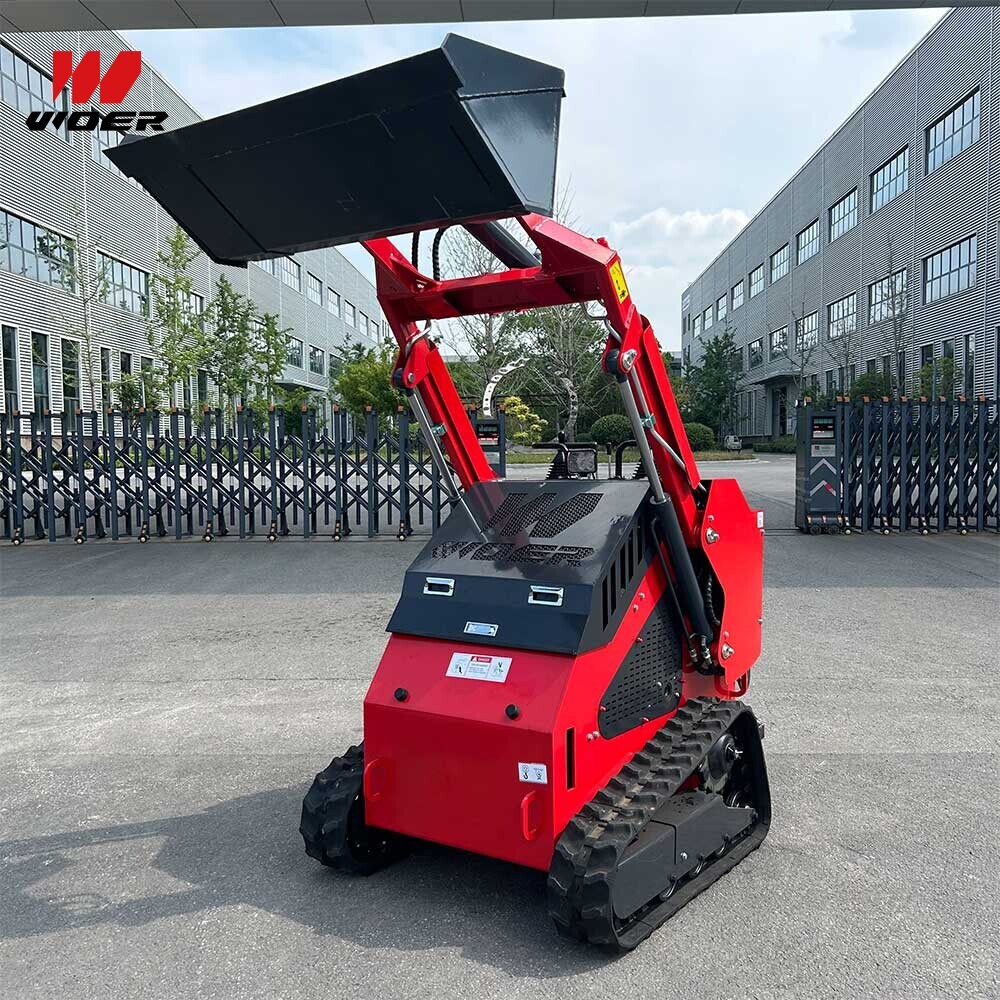Navigation
Contact us
Phone
Message

Compact, powerful, and versatile: upgrading to a skid steer loader or a mini skid steer loader is one of the fastest ways to speed up material handling, site prep, and finish work. This guide explains how the right skid loader configuration reduces cycle times and total cost of ownership while improving operator comfort and safety.
Why a Skid Steer Loader Accelerates Your Workflow
Skid steer loaders deliver a concentrated power-to-weight ratio, allowing operators to move more material per hour compared with manual labor or small excavators. A skid loader's nimble footprint, combined with quick-attach systems, enables rapid tool changes — from buckets to hydraulic breakers — minimizing downtime between tasks. For confined yards or dense forests, a mini skid loader or mini skid steer loader preserves mobility without sacrificing lift capacity.
Core benefits at a glance
- Improved cycle times for loading, trenching, and grading.
- Versatile attachments expand use cases: augers, mulchers, pallet forks.
- Lower operating costs per hour versus larger tractors.
- Better accessibility: mini skid steer track loaders operate in tighter, sensitive areas.
Technical Performance & Standards
When evaluating skid steer loader options, weigh rated operating capacity, hydraulic flow, engine power, and breakout force. Look for compliance with relevant standards such as ISO stability ratings, EN safety guards, and ASTM material-handling guidance where applicable. Machines designed to meet international standards often deliver predictable performance and safer operation, especially in export markets where certification matters.
Key specs that impact speed
- Rated Operating Capacity (ROC): Dictates safe payload per cycle.
- Hydraulic flow and pressure: Determines attachment efficiency and speed.
- Travel speed and track versus wheel options: Track skid steer loader models trade top speed for traction and lower ground pressure.
Comparing Options: Skid Loader vs. Mini Loader Skid Steer
Choosing between a full-size skid steer loader, a mini skid loader, and a mini skid steer track loader depends on jobsite constraints and tasks. Full-size skid steer loaders excel at higher-capacity material movement; mini loaders are cost-efficient for landscaping, small construction, and interior demolition. A mini skid steer track loader adds stability and reduced ground disturbance for soft or sloped surfaces.
Practical Use Tips for Operators
Operators who understand how to exploit hydraulic flow and choose the right attachment shave minutes off each cycle. For example, using a tooth bucket for bulk material and switching to a grading bucket for finish passes reduces total machine hours. Regular pre-shift checks — hydraulic hoses, track tension, and quick-attach wear — prevent mid-job delays.
Safety and productivity practices
- Match attachment hydraulic requirements to the skid steer loader specifications to avoid underperformance.
- Train operators on ROC limits and load balancing to prevent tip hazards.
- Use track options when ground disturbance matters; wheels when speed and simple maintenance are priorities.
Procurement Guide: Buying a Skid Steer Loader
Buying decisions hinge on duty cycle, available budget, and service network. Consider the long-term cost of ownership: fuel efficiency, scheduled maintenance intervals, warranty coverage, and spare parts availability, especially for imports like skid steer loader china offerings. Request verified operating data and ask for a test day to measure cycle times in your application.
For compact automation or yard maintenance tasks, also evaluate hybrid workflows. For instance, pairing a compact loader with robotic aids can accelerate repetitive mowing or grading chores — and that’s where new products like Industrial skid steer loader may complement your fleet, automating perimeter work while the skid loader handles heavier chores.
Case Study: Cutting Job Time by 35%
A mid-sized timber mill replaced two older compact tractors with a pair of mini skid steer loaders and one full-size skid loader. By standardizing on quick-attach forks and a high-flow hydraulic mulching head, they reduced deck-change time, improved stock throughput, and cut fuel costs 18% in the first 12 months. The operator feedback emphasized visibility, joystick ergonomics, and precise control — all factors that matter for real-world productivity gains.
Common Misconceptions
Many buyers assume a larger engine always means faster work. Not true. Efficiency comes from matched hydraulics, appropriate attachments, and operator skill. Another misconception: tracks always slow work. In reality, a track skid steer loader often completes tasks quicker on uneven ground because it avoids bogging and rework.
Why Choose Our Solutions and How to Contact Us
We combine industry experience with application-focused guidance to recommend the right skid steer loader configuration for your operations. Our engineers evaluate duty cycles, recommend attachments, and supply service plans aligned with ASTM and EN best practices. Trial units, operator training, and a documented parts availability plan are standard in our proposals.
Ready to upgrade? Contact our sales team for a site assessment, ROI analysis, and demo scheduling. We'll help you select between skid loader models, mini loader skid steer options, and track loader skid steer variants to achieve faster, safer jobs with measurable cost savings.
Frequently asked questions
Q: Should I buy a mini skid loader or a full-size skid steer? A: Choose a mini skid loader for tight access and lower hourly costs; choose a full-size skid steer loader for higher ROC and heavy-duty attachments. Consider a mini skid steer track loader when turf protection and slope stability are priorities.
Q: How important is dealer support? A: Critical. Quick access to parts and qualified technicians dramatically reduces downtime and keeps cycle times high.
Contact us to evaluate models, schedule on-site trials, and receive a detailed cost-of-ownership comparison tailored to your workflows and production targets.

This stunning beach house property is a true oasis, nestled in a serene coastal community with direct access to the beach.
Contact
West Street, Melbourne Victoria 3000 Australia